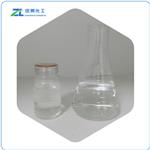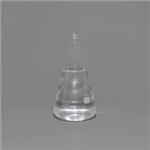Chemical Properties
CLEAR COLOURLESS LIQUID
Uses
Methyl Thioglycolate is an derivative of Thioglycolic Acid (T350760), an organic compound containing both a thiol and a carboxylic acid functional groups. Thioglycolic Acid and its derivatives are oft
en used in organic synthesis as a nucleophile in thioglycolysis reactions and is also used as a S transfer agent for sulfonyl chloride synthesis. Methyl Thioglycolate have been studied for the its inf
luence on neocarzinostatin activation and expression of DNA damage.
Uses
Methyl thioglycolate was used in the preparation of 3-carbomethoxy-4- oxotetrahydrothiopyran, 2- and 4-carbomethoxy-3-oxotetrahydrothiophene. It is used to prepare methyl thioglycolate and aminoethanethiol conjugated gold nanorods.
Production Methods
Adding thioglycollic acid with purity of between 70.0 and 96.0 percent and methanol with purity of between 95.0 and 99.9 percent into a reaction device according to the molar ratio of 1:1.3-4.0; subsequently, adding an activating agent into the reaction device, stirring and heating for reaction; and after the reaction is finished, carrying out separatory distillation on reaction products to obtain the methyl thioglycolate. The activating agent is a p-toluenesulfonic acid methanol solution with a mass concentration of between 20 and 30 percent, and the use amount is 0.5 to 1.0 percent of the total mass of relative input materials.
Application
Methyl thioglycolate is a chemical compound that is used in the pharmaceutical industry as an intermediate. It has been used to synthesize anti-inflammatory drugs, such as aspirin and ibuprofen, and also for the treatment of autoimmune diseases. Methyl thioglycolate binds to amino acids on the surface of bacteria, which prevents them from functioning properly. This binding causes the cells to stop growing and die.
Definition
Methyl thioglycolate are widely used in free-radical photoinitiated polymerization reactions. In particular, the use of methyl thioglycolate (MTG), CH3OC(O)CH2SH, results in greater photopolymerization reaction rates, attributed to a weakening of the sulfur–hydrogen bond by hydrogen bonding of the thiol group. MTG constitutes the smaller exponent of the series of CH3OC(O)(CH2)nSH compounds, reported as intermediated in the organic sulfur cycle in marine environments, produced by marine phytoplankton.
General Description
Methyl thioglycolate reacts with nonprotein component of the antitumor antibiotic neocarzinostatin to form 1:1 adduct. It reacts with isothiocyanate to form Rhodanine.
reaction suitability
reagent type: ligand
reaction type: [1,2]-Wittig Rearrangement







